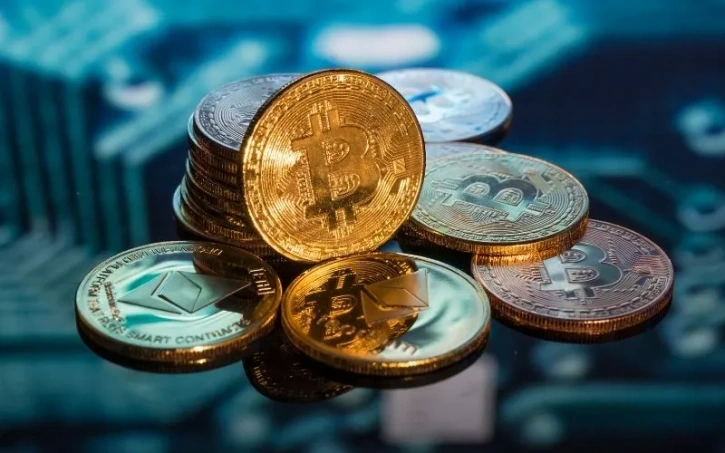NFTs Have No Intrinsic Value. Why Are Some Projects Worth Billions?

Cartoon drawings of apes aren’t valuable, even if they’re stored cryptographically on some blockchain ledger. They’re akin to the funny caricature portraits at Disney World. You might pay $20 for one if your significant other or kid asks enough times. But you probably wouldn’t pay $180,000 (the current floor price of Bored Ape Yacht Club NFTs).
Would you pay $180,000 if the Disney World artist minted her art on the blockchain? Cartoon versions of you and your girlfriend forever etched in the history of the Ethereum network – probably still no, right?
The value of most NFT projects has nothing to do with the collection’s artwork. There are tons of super talented artists in this space (including some of the artists hired on Fiverr who don’t even know they’re in this space yet). But very few projects are valuable because of art itself (this does not include mind-blowing 1-of-1 artworks intended to exist solely as art).
The rarest Bored Ape Yacht Club (BAYC) NFT is not the same as an artwork from Pablo Picasso or Claude Monet. Even if it does have cyborg eyes, a bored dagger mouth, an Irish boho hat, wool turtleneck, and DMT fur. I don’t know who needs to hear this, but it’s a cartoon ape, folks.
We all know this to be true. But Twitter narratives suggest people are still buying into NFT projects because “they look cool” and “!vibes.”
NFT valuations are so distorted that we actually believe NFT projects are worth thousands of dollars because they’re NFT projects. You hear it all the time: “It’s the next BAYC.” This suggests that:
A) BAYC is valuable because it is an NFT project.
B) Project X is an NFT project and is as “cool” or “cooler” than BAYC.
C) Project X should be worth $180,000 or more.
Ignoring both B and C for obvious reasons, A fundamentally misunderstands how BAYC generates value for its holders. Anything can be an NFT. NFTs are not intrinsically valuable. They’re valuable in relation to the value they provide for holders. And the opportunity to purchase overpriced sweatshirts and hang out in Austin bars with random internet strangers is not a scalable value accrual mechanism. It’s a marketing tactic (and an effective one at that).
If NFT projects aren’t intrinsically valuable, why are some worth billions of dollars?
Here are a few real reasons NFT projects are worth so much money:
*Note: this is not to say that NFT projects SHOULD be worth so much money. These are simply reasons NFT projects COULD have long-term value.
1. Access to teams at the forefront of a significant technological movement
Most NFT projects serve as a fundraising opportunity for teams that need to inject capital into their creative vision. The drop functions as a launchpad similar to crowdfunding websites like Kickstarter or GoFundMe or venture capital (VC) investment rounds like Series A, B, and C.
This gives the general public a way to purchase access to teams that are building at the forefront of one of this generation’s most significant technological movements. The risk-reward ratio is intense. Funding or otherwise supporting the smartest and most talented people in web3 will pay off in a big way for some investors and collectors.
It’s for this reason that a project’s team is so important. If the team is not actually going to follow through on their creative vision, or perhaps they don’t have a creative vision at all, you’re lighting your ETH on fire (and not in the good deflationary burn kind of way either). Even if the team is trying, most projects will fail. It doesn’t matter how “dope” the cartoon animal and its hoodie is. This space is relentlessly fast-paced.
If the project’s team is anonymous, it’s harder to judge the project’s potential upside. Instead of banking on the team’s prior achievements and evaluating individual members’ past actions, the project has to speak for itself.
There is plenty of upside to be had for anonymous teams (BAYC started anonymously), but the frequency of rug pulls, lies, and deception are higher too. It’s easier to bail on a project and steal everyone’s money when there are no in-real-life (IRL) consequences to your actions. If teams are doxxed (or not anonymous), they have to live with that decision and face public scrutiny. They’ll probably never have another successful project in the web3 space.
The team matters more than the actual project. NFTs are technologically versatile. Additional value can be added after the fact and by the community. As long as the team is pushing the boundaries of technology (and is committed to rewarding the folks who provided funds to allow them to push those boundaries), the upside to being one of those folks is unlimited.
2. Historical significance
The teams that do push the boundaries of technology are likely to create historical events. And NFTs that hold some sort of historical significance are more likely to be worth money in the future than those that do not.
CryptoPunks is a great example of an NFT project that will likely never lose its historical significance. Larva Labs, the team behind CryptoPunks, is a great team to have exposure to and are actively (at least, semi-actively) building in the space. But even if the entire company disbanded tomorrow, CryptoPunks are valuable because of their place in web3 history.
This provides a level of value stability that other projects will never capture. Marie Antoinette’s Pearl Pendant doesn’t go out of style and lose value, no matter how many “cooler” pieces of jewelry are created.
Historical items stay valuable over time as long as the industries in which they derive their historical significance from (fashion, web3, etc.) stay relevant. A bet on CryptoPunks is a bet on the increasing cultural importance of Ethereum.
3. Leveraging ETH and other cryptocurrencies
Ethereum-based NFTs provide leveraged access to the network’s native cryptocurrency token, Ether (ETH).
Think of each NFT as a visual wrapper for a bank account that holds ETH. You deposit 10 ETH into your bank account (i.e. buy an NFT), and it stays there until you want to withdraw (i.e. sell an NFT). When ETH goes up or down in price, so does the value in your bank account.
In the meantime, the visual wrapper that you chose has its own market. Some wrappers are worth more or less ETH based on the execution of the team that created the wrapper, the historical significance of the wrapper, and (as we will see in a minute) the other people that also chose that wrapper for their bank accounts.
If ETH goes up in price, your bank account goes up in price. The same is true if you hold ETH in a MetaMask or Ledger crypto wallet. But MetaMask is a boring old bank account that just holds your funds and doesn’t provide any additional value. NFTs are fun, new bank accounts with price volatility based on how many people want to deposit into their bank. Your 10 ETH deposit could be 20 ETH in a month. And the price of ETH could also go up, increasing both your deposited amount and the value of that deposited amount.
And if you believe no NFTs have value (a reasonable initial assumption), think of them as stored value and a proxy for entry into ETH. That cute koala jpg is just eth with an image attached. Punks aren’t just pixelated images, but also a store of value for ETH
— Jonathan Bales (@BalesFootball) March 7, 2022
Certain NFTs are so tied to the history of a certain network (CryptoPunks and Ethereum, for example) that it is safe(ish) to assume that as if the network itself increases in value, so will the NFT project.
It’s sort of like using your investment in Intel stock to invest in Apple. Intel supplies Apple’s products. If Apple does well, Intel likely does well, too. But Intel’s value isn’t directly tied to Apple. It has a market of its own. And when both go up, you benefit two-fold.
NFTs increase the upside (and downside) of making a bet on a specific network’s native cryptocurrency token.
4. Clout and network effects
When influential people do things, other less influential people want to do the same things. It’s a social game. And we all play it.
Going back to the visual bank account wrapper analogy, NFTs are a way to quickly show off your crypto wealth. You’d look pretty stupid if you changed your Twitter pfp (profile picture) to a screenshot of your Metamask crypto wallet’s balance. But you look pretty cool (at least to the certain subsection of the population you’re trying to look cool in front of) when you change it to a BAYC or CryptoPunk NFT.
It’s called clout, and we all want it (likely for evolutionary reasons). And when we get it, it opens up certain network effects.
People on Twitter are more likely to take your NFT advice seriously if you are sporting a CryptoPunk yourself (even if owning a CryptoPunk is not at all directly correlated to being a good NFT trader or collector). And more importantly, you’re more likely to be accepted by other rich and influential people.
Holding certain NFTs opens up possibilities in the web3 world that are otherwise closed to normal people. It’s like hanging out in a virtual country club. Country clubs increase your access to investment opportunities, beneficial personal relationships with influential people, and more. The same is true of some NFTs. And they cost about the same.
Conclusion
There are plenty of reasons to think NFTs are valuable. But to value any NFT simply because it is an NFT misunderstands the technology.
NFTs can provide proof of ownership for your house and car, grant you access to exclusive events, show the world you attended a certain event, or even advertise for other NFTs (as evidenced by my hidden folder on OpenSea). The value of the NFT is extrinsic, not intrinsic.
This groundbreaking technology is going to influence every major industry in the world. And it should. It makes proof of ownership simpler, fundraising accessible to the general public, ticketing for events faster, and so much more.
But cartoon drawings remain as valuable as they were in the past (this isn’t to say there is no value in cartoon drawings, a painting of Spongebob recently sold for $6 million, but the value came from it being a KAWS). The value of a BAYC NFT doesn’t come from the art. It comes from the execution of the team, the historical significance of the project, the leveraging opportunity and store of value for ETH, the clout and network effects of holding the NFT, and more.
Be careful, and good luck.





